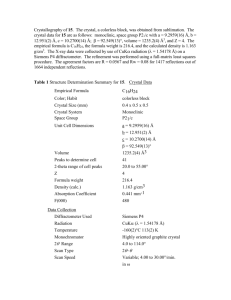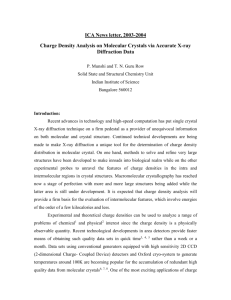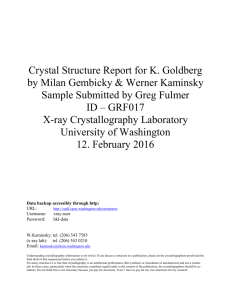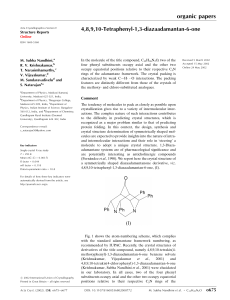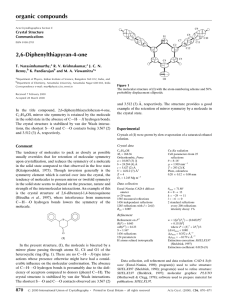Chemistry 993 - Solid State Structural Methods, Spring 1997
advertisement
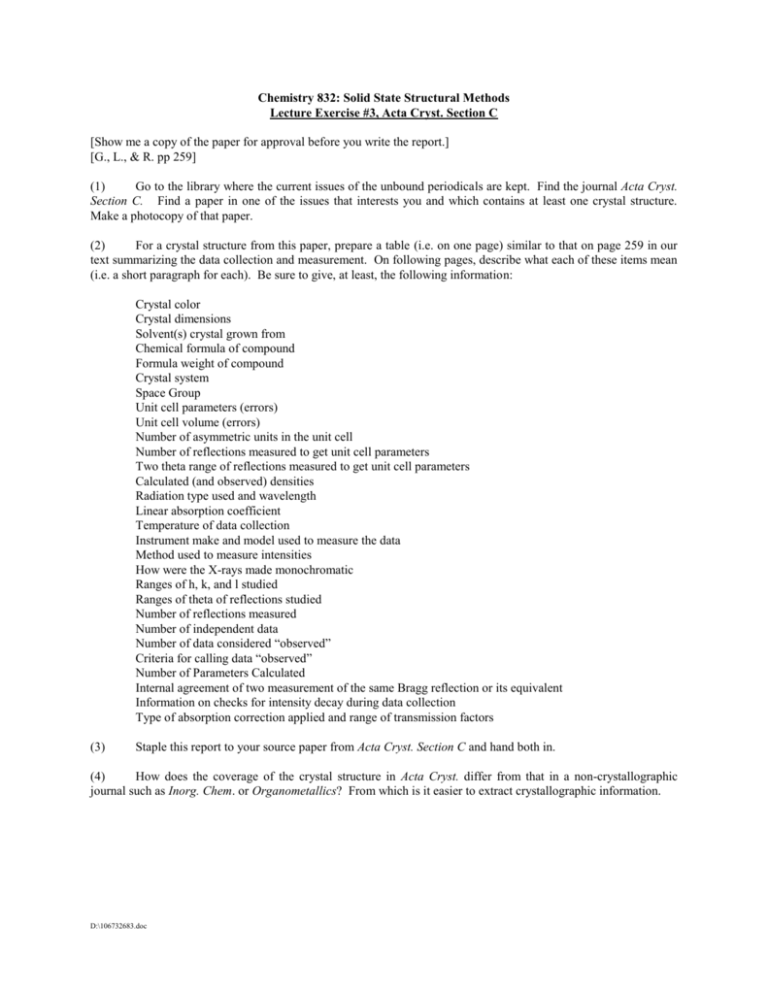
Chemistry 832: Solid State Structural Methods Lecture Exercise #3, Acta Cryst. Section C [Show me a copy of the paper for approval before you write the report.] [G., L., & R. pp 259] (1) Go to the library where the current issues of the unbound periodicals are kept. Find the journal Acta Cryst. Section C. Find a paper in one of the issues that interests you and which contains at least one crystal structure. Make a photocopy of that paper. (2) For a crystal structure from this paper, prepare a table (i.e. on one page) similar to that on page 259 in our text summarizing the data collection and measurement. On following pages, describe what each of these items mean (i.e. a short paragraph for each). Be sure to give, at least, the following information: Crystal color Crystal dimensions Solvent(s) crystal grown from Chemical formula of compound Formula weight of compound Crystal system Space Group Unit cell parameters (errors) Unit cell volume (errors) Number of asymmetric units in the unit cell Number of reflections measured to get unit cell parameters Two theta range of reflections measured to get unit cell parameters Calculated (and observed) densities Radiation type used and wavelength Linear absorption coefficient Temperature of data collection Instrument make and model used to measure the data Method used to measure intensities How were the X-rays made monochromatic Ranges of h, k, and l studied Ranges of theta of reflections studied Number of reflections measured Number of independent data Number of data considered “observed” Criteria for calling data “observed” Number of Parameters Calculated Internal agreement of two measurement of the same Bragg reflection or its equivalent Information on checks for intensity decay during data collection Type of absorption correction applied and range of transmission factors (3) Staple this report to your source paper from Acta Cryst. Section C and hand both in. (4) How does the coverage of the crystal structure in Acta Cryst. differ from that in a non-crystallographic journal such as Inorg. Chem. or Organometallics? From which is it easier to extract crystallographic information. D:\106732683.doc




